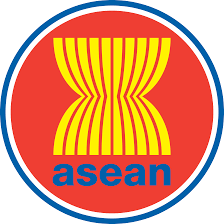Whether you’re a startup looking to leverage the fastest growing markets or you’re already a multinational company in the midst of expansion, there are several reasons you should open operations in Southeast Asia. Its growing economy is large, youthful and under-exploited. With the right entry strategy, tapping into the Southeast Asia market can help your company scale and grow at record-low costs.
As businesses become increasingly globalized, it’s now more important than ever for businesses to expand their operations abroad and enter other markets. It gives you the opportunity to increase profit margins and target a larger consumer base. By cutting costs and increasing sales, you can boost your bottom line and become a well-known international company.
If you find China on a map of Asia and look beneath it, you’ll find Southeast Asia. It includes the Asian countries east of India, which include Cambodia, Myanmar, Vietnam, Laos, Thailand, Malaysia, Indonesia, Brunei, Singapore and the Philippines. Around 620 million people live in Southeast Asia, which is about double the population of the United States. The largest countries in the region are the Philippines, Indonesia and Vietnam, and most people are under 35 years old.
So, why Southeast Asia? Here are some good reasons you need to leverage the growing market in this region:
1. Utilize Global Experts
As Southeast Asia becomes an increasingly popular hub for startups, the region is now teeming with venture capital firms, and talent from around the globe is catching on. As the Silicon Valley bubble becomes more and more crowded, experts are moving on to the next emerging market.
2. Increase Your Profit Margin
When you tap into new markets, you’re not only reaching more customers, but also accessing new opportunities for reducing costs in your supply chain. The cost of manufacturing is lower in Southeast Asia, and you can pay less for services like graphic design, marketing agents and other contract work. Plus, by increasing your product’s reach to another market, you increase your profit margin simply by manufacturing more units and hence lowering the per-unit manufacturing cost.
3. Capitalize on a Fast-Growing Market with Low Competition
Southeast Asia is a huge region in size and population. In terms of its development potential and speed of economic growth, it’s similar to where China was 20 years ago. At the rate it’s developing, it’s soon to be another hub for millionaires and even billionaires. Stay ahead of the curve for a competitive edge by entering while the economic boom is still in its infancy.
4. Low Barrier to Entry
Compared to other regions that are coming increasingly opportune for businesses to enter, Southeast Asia presents minimal barriers to entry. The countries in this region are eager to do business with foreigners, and have loose regulations that give foreign businesses plenty of space to establish themselves quickly.
The Association of Southeast Asian Nations (ASEAN) is an alliance of 10 Southeast Asian countries that encourages economic and political cooperation among international companies. With this type of atmosphere, it’s easy to establish international partnerships and navigate your entry into the market smoothly.
5. Consumer Income and Demand are Increasing Rapidly
Southeast Asia has a youthful population of consumers increasingly interested in the international market. Consumers have years ahead to increase their incomes, and their purchasing power is bound to increase as well. Singapore and Malaysia already have mature economies, they’re great entry points for internationalizing companies. With a per capita income of $52,000, Singapore is ripe with high consumer purchasing power. Countries in Southeast Asia that are still developing economically offer long-term opportunities you can capitalize on the sooner you enter.
6. Technology is Highly Accessible
When it comes to the Internet and mobile devices, Southeast Asia is hyperconnected. Virtually everyone living in cities has a smartphone with 4G or 5G data connectivity, and public Wi-Fi hubs are abundant. With the consumer market connected to the Internet, they have greater purchasing power. As a result, local startups and international companies alike are capitalizing on e-commerce in Southeast Asia in industries ranging from food to fashion.
Case Study: Energy and Power
In only the past 2 decades, Southeast Asia’s energy consumption has nearly doubled as a result of its rapid economic growth. This upward trend in power demand isn’t expected to change anytime soon. To meet the growing demand for energy supply, international companies specializing in power and energy have ample opportunity to profit in Southeast Asia for years to come.
What Are the Risks?
When you’re entering a new market, you may deal with language and cultural barriers that cause hiccups in the entry process. You also risk hurting your bottom line if you haven’t adapted your marketing strategies to appeal to the people specific to each country. That’s why you need to partner with experts who have experience entering Southeast Asia as a foreign company, with knowledge of your prospective customer base and your competitors in the region. Regional experts can also help you with local logistics, such as locating the best suppliers and distribution channels.
Whether your industry is healthcare, agriculture or retail, our years of experience helping Nordic companies navigate their entry into Southeast Asia can help you develop the best entry strategy for your business. With our network of partners in the region, we guarantee your entrance will maximize your bottom line.
Translation Services for Southeast Asia
If you are planning an entry to Southeast Asian markets, or are actively involved in marketing to that region, turn to GTS for professional Asian translation services. This includes Malay translation services, Bahasa Indonesian translation services, Vietnamese translation services, Thai translation services and Tagalog translation services.






